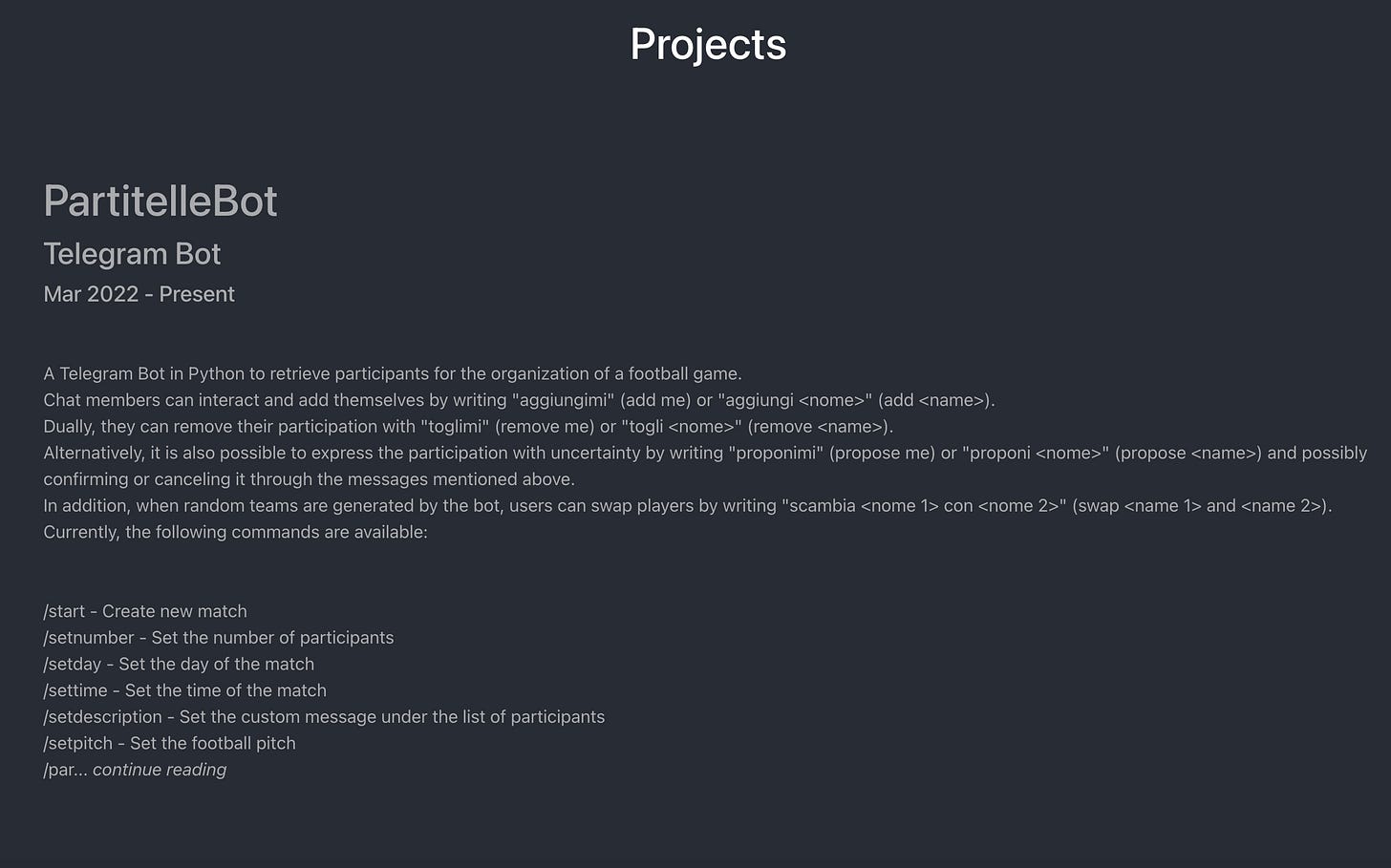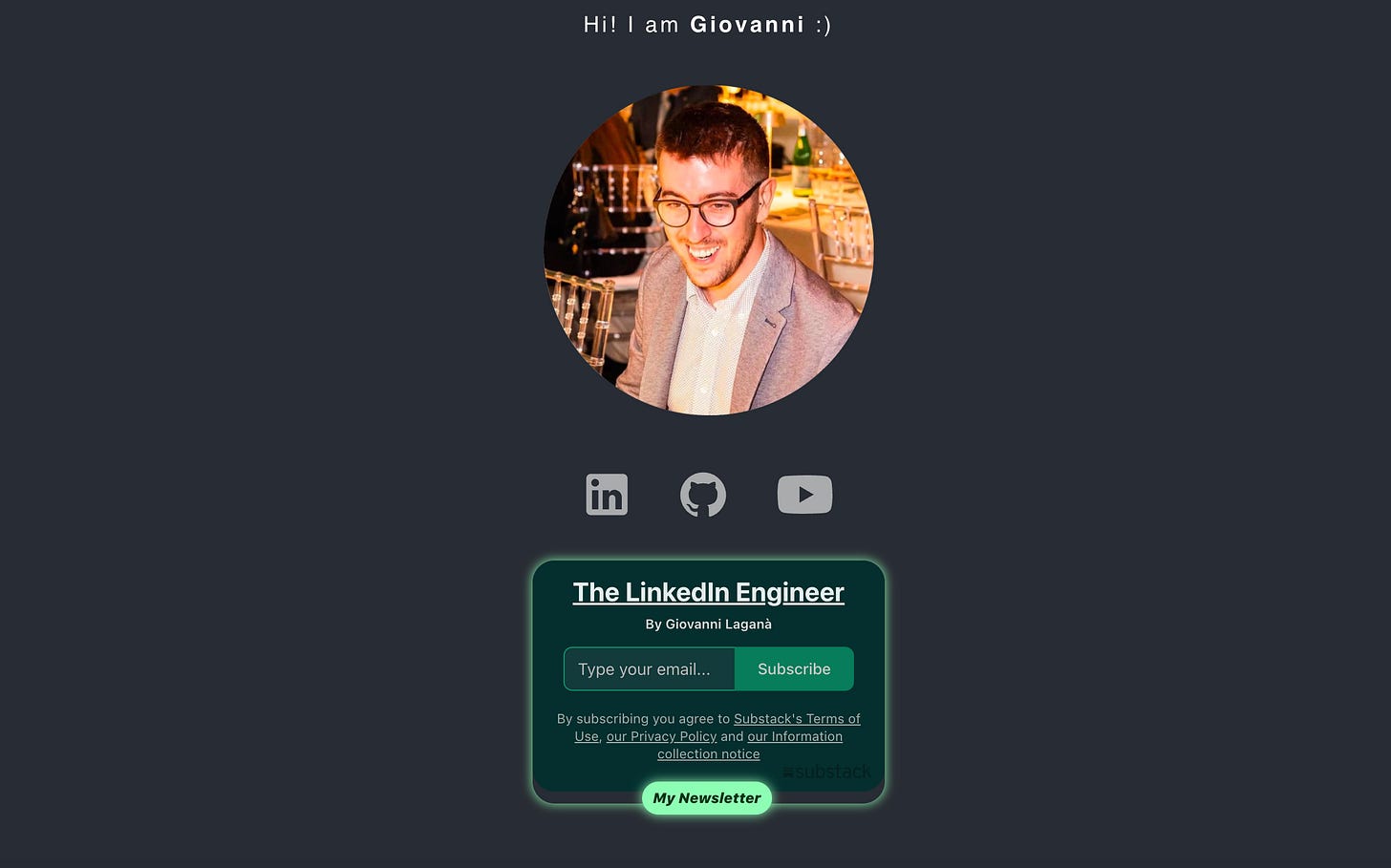Your personal website vs. your LinkedIn profile 🌐
Which one matters more for a developer?
As a developer building your professional brand, you hear two pieces of advice all the time:
“You need a strong LinkedIn profile.”
“You need a personal website or portfolio.”
This often leads to a big question: do you really need both? And if so, how do they work together without just repeating the same information? Which one is more important?
Many developers treat them as two separate, disconnected things, creating twice the work for half the impact. The real secret is to stop thinking of them as “vs.” and start thinking of them as a powerful, interconnected system.
Your LinkedIn profile is for reaching your network and being discovered. Your personal website is for showing your depth and owning your story.
Let’s break down how to make them work together in perfect synergy, using my own setup as a practical example.
Your LinkedIn profile: your professional hub 🤝
Think of your LinkedIn profile as the busy city center of your professional brand. It’s where the action happens.
Its unique strengths are:
Discoverability: This is its superpower. Recruiters and hiring managers are actively searching on LinkedIn every single day.
Networking: It’s the only platform designed for professional connections. It’s where you build your network and engage with peers.
Social proof: Features like skill endorsements and recommendations provide public validation of your abilities.
Daily engagement: It’s a dynamic platform where you can share thoughts and stay visible.
My own headline is a clear example of this principle in action: “Fullstack Software Engineer II @ TheFork | Author @ thelinkedinengineer.com”. It uses the platform’s structure to immediately state my primary role and my most important project, the newsletter.
LinkedIn is where you attract attention and build credibility within the professional community.
Your personal website: your creative sandbox 🎨
If LinkedIn is the city center, your personal website is your own private, beautifully designed home. You have 100% creative control.
Its unique strengths are:
Deep dives and storytelling: On my own site, giolaga.com, I don’t have a traditional “blog” section. Instead, I use the “Projects” section to create deep-dive case studies for my most important work. This is a space for detailed storytelling, showing not just the final result but the process behind it, something that’s much harder to do on LinkedIn.
Your central hub: A personal website is the one link that rules them all. On giolaga.com, I link to my newsletter, my GitHub, and my LinkedIn. It’s the central “switchboard” for your entire online presence.
Showcasing your personality: You control the design, the tone, the photos. You can show who you are beyond professional titles.
A Direct Line to Your Audience: A key feature on my site is the subscription form for my newsletter. A personal website is the best place to build your own audience (like an email list) that you own and control.
Your website is where you prove your depth, own your narrative, and build a direct relationship with your audience.
What content goes where? A simple breakdown 📝
Don’t just copy and paste content between the two. Each platform has its job.
Your career history:
LinkedIn: Your full, detailed career history lives here. It’s the “source of truth” for your professional timeline, structured and easy to scan.
Your website: This is where you can tell the story behind your timeline. On giolaga.com, the “History” page also lists my full career path, but it does so in a more narrative format that complements the structured data on LinkedIn.
Your projects:
LinkedIn: Use the “Projects” section for concise summaries of your most important work. It’s the “trailer,” focused on the problem, the tech stack, and the quantifiable result.
Your website: This is where you host the “feature film.” For each project, you can have a full page with a detailed case study, screenshots, code snippets, and a story about the challenges you faced.
Your writing:
LinkedIn: Use posts for short-form thoughts, quick tips, and to announce your new, detailed content. It’s for starting conversations. I do this every week to promote my newsletter articles.
Your website: This is the home for your long-form case studies and articles. The detailed “Projects” section on my site serves as my personal knowledge base.
Making them work together: the power of synergy 🔗
Now, let’s connect the system. The goal is to create a virtuous cycle where each platform feeds the other.
Make your website the star of your LinkedIn profile. This is the most important step. On my own LinkedIn profile, the very first thing in my “Featured” section is a big, clear link to my newsletter, hosted on my personal domain. This is my main call to action. I’m telling every visitor: “This is the most important thing I want you to see.”
Use LinkedIn to drive traffic to your website. When you publish a new case study in your “Projects” section, don’t just let it sit there. Write a compelling LinkedIn post that summarizes the key idea, shows a cool visual, and invites your network to read the full deep-dive on your site. You are using LinkedIn’s massive distribution power to bring people into your ecosystem.
Link back to your LinkedIn from your website. Your website should have a clear, easy-to-find link to your LinkedIn profile. This allows someone who discovers your work via Google to easily connect with you on a professional level.
The verdict: do you actually need both? 🤔
Let’s be direct. In the beginning of your career, a strong LinkedIn profile is probably more important because its primary strength is discoverability for job opportunities.
But as you grow, and you want to build a true professional brand, a personal website becomes essential.
So yes, ideally, you need both.
LinkedIn is for being found.
Your website is for proving you’re worth keeping.
They are two sides of the same coin, working together to build a powerful and unified story about who you are as a developer and the value you bring to the table.









